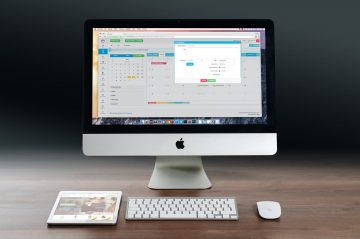How to Encrypt a Disk Image on Mac to Protect Private Files

It's always a good idea to store your sensitive data somewhere hackers would have a harder time to reach, like on an external drive or in the cloud. Not just that, though. Even those places can be breached, so it's a good idea to encrypt them beforehand. You don't have to download or purchase any specialized software to do this either; your Mac computer already has everything you need for the task. Apple's Disk Utility allows you to create an encrypted disk image that you can use to store delicate files so that no one else will get their hands on it.
One of Apple's Disk Utility's best features is the ability to generate disk images, with or without any kind of encryption. All you have to do to create an image is to select the Disk Utility, which is located in the Utilities folder in your Applications folder.
When you opt to create an encrypted disk image you can choose either to create a new disk image, or you can use the Disk Utility to make a disk image of an existing folder, which already contains the files that you want to encrypt. The guide below will explain how you can use the Disk Utility app on your Mac computer to create both types of encrypted images.
How to generate a new encrypted disk image
We begin by making a brand new blank disk image. Select "File", press "New Image," then "Blank Image". Alternatively, you can just or press Command-N.
Then we need to choose a name for our encrypted image as well as the location where we want to store the newly created disk image. You will have to name the disk image twice. First for the file name, which is located at the very top of the dialogue window, and a second time for the name of the volume, which mounts in the Finder. That's why there's a second Name field located down in the window.
Next, we need to pick a size for your disk image. The standard size Disk Utility sets by default is 100 MB. Adjust the size based on the files you wish to store. Click on the "Image Format" menu and you can select between two formats, sparse or sparse bundle disk image. The two formats appear very similar, and they are in most regards but will go with the sparse image for the purposes of this guide. Using a sparse image allows us to add more files to the disk image than normal and the best part is that it will automatically resize itself. The sparse image is your best bet if you want to modify the contents of the disk image. On the other hand, if you don't plan to do that you can simply select read/write disk image.
With the proper image type selected we can move on to the next step. Select the Encryption menu and choose either 128-bit or 256-bit encryption. Obviously, the 256-bit encryption is superior in terms of sheer strength, but the downside is that it demands more processing power It shouldn't be an issue with today's computers, so I recommend you select the 256-bit encryption but if you're using an older Mac you may want to choose the 128-bit encryption instead. Afterward, the Disk Utility app will prompt you to enter a password. Be sure that you don't forget this password, write it down if you have; you'll be able to add it to your keychain app later.
Finally, press "Save", and the Disk Utility app will begin writing the disk image to the location you chose. Depending on the image size and your Mac computer's CPU this process may take a few minutes. Once the image is saved the Disk Utility app will inform you.
Go to the Finder, and press on your disk image. The Finder app will ask you to enter the password that you created earlier (you do remember it, right?) when generating the image file. You have the option to put a check next to "Remember Password" in My Keychain if you don't want to enter this password every single time.
The disk image will be mounted on the Desktop, or in the Finder sidebar, much like any other disk or volume. Any time you drag files into the disk image, they will be encrypted and once you eject the disk image, no one will be able to access the files without knowing the correct password, including you, so don't forget it.
How to generate a disk image from a pre-existing folder
Like I said before, you have more than one option for generating disk images. You can use an already existing folder and change it into a disk image instead of starting from scratch. Here's how:
First, put the files you wish to encrypt in a folder somewhere in the Finder. After that select "File" > "New Image" > "Image from Folder" in the Disk Utility app. Disk Utility will ask you to choose the folder, and from there it's the same steps as creating a new image from scratch.
Unfortunately, you have fewer options available when you generate a disk image from a folder instead of creating a new one. You'll see the same encryption options as before, but the image format options won't be the same. The Disk Utility app knows how big the folder is, and you will not be able to create a sparse image. Overall, the process is more restricted if you opt to encrypt a folder. Also, you won't be able to add any files to the image in the future, so don't do this unless you plan on archiving the files. Select either "Compressed" or "Read/Write" for the image format.







